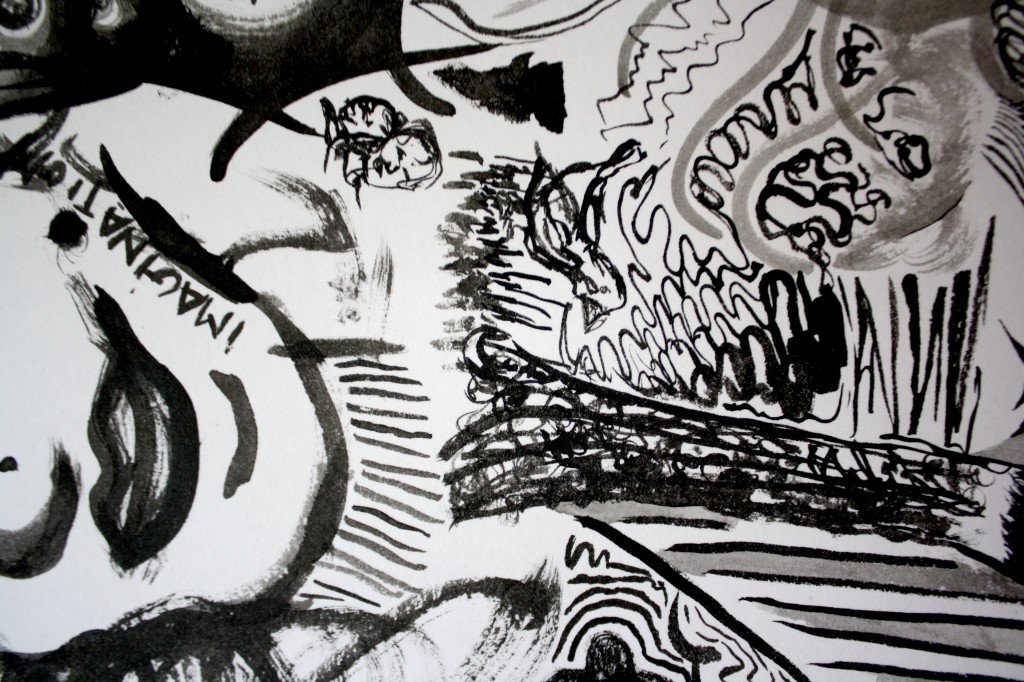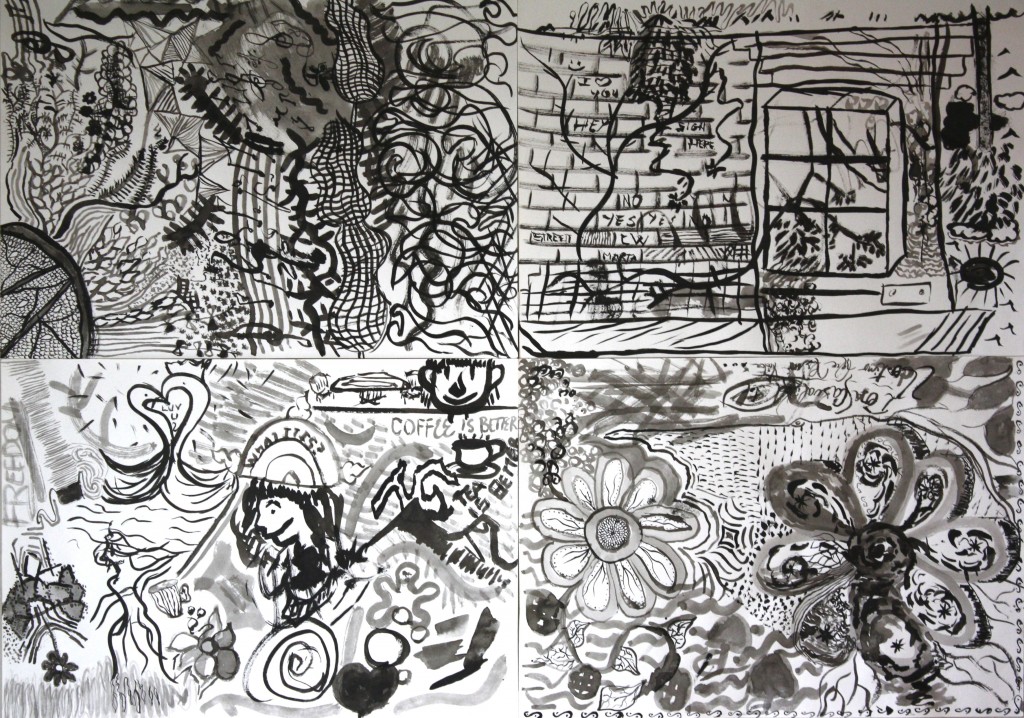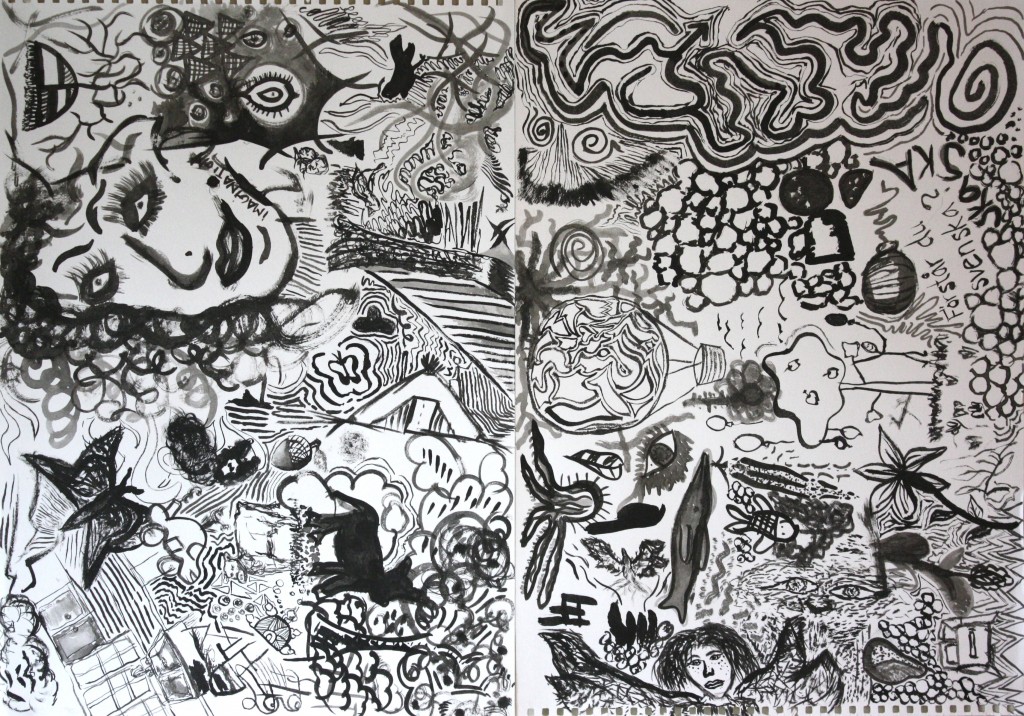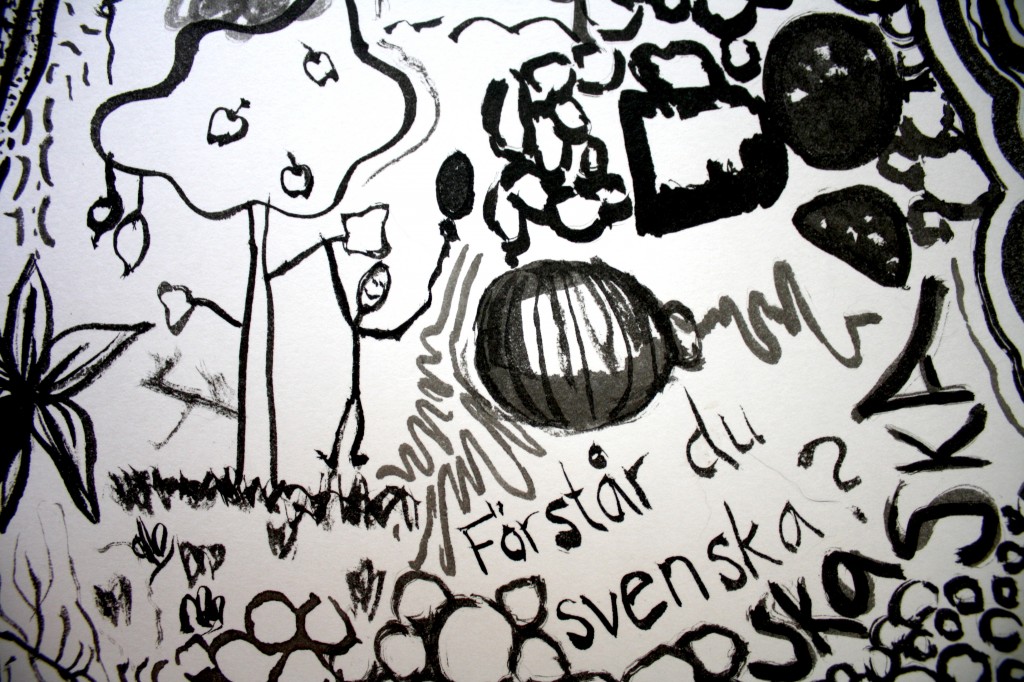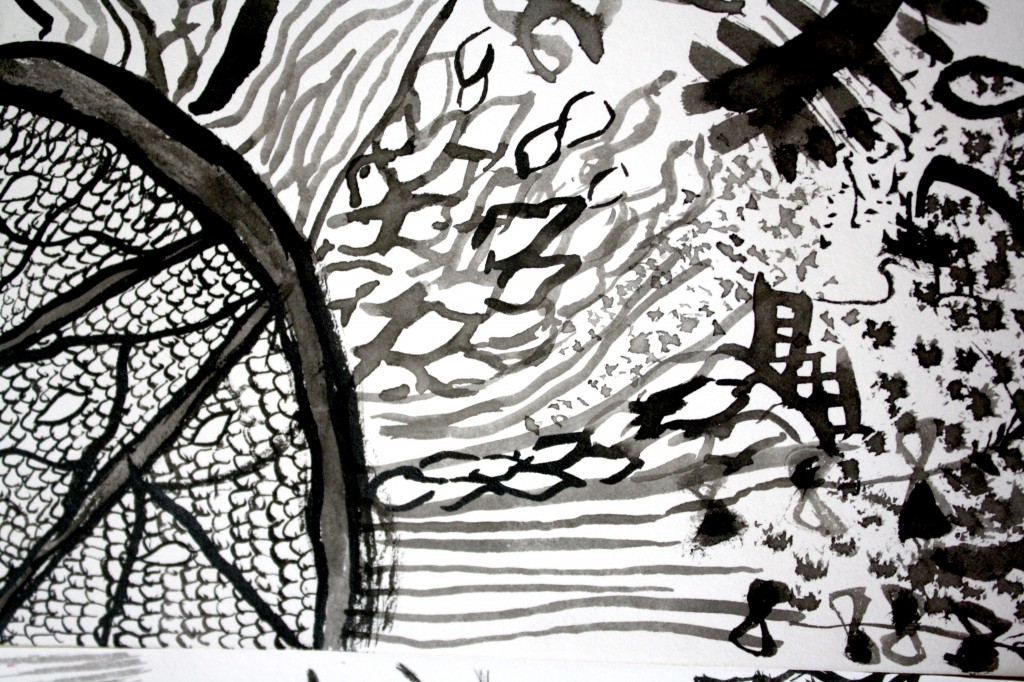The creation of collaborative pieces with the Catholic Worker Farm community were joyful experiences of fellowship with volunteers and guests. Willing participants sat around the kitchen table, a simple act which placed all of the artists on the same level in solidarity with one another much like during our community dinners. Jean Vanier spoke of sharing a meal as a kind of celebration in his book “Our Journey Home,” and I saw the creation of these collaborative pieces as a celebratory sharing of creativity. Rather than asking people to join a mission to create works of art, inviting community members to join in contributing to the pieces was more so an opportunity to spend time together and to take part in a relaxed activity. I encouraged everyone simply to have fun with the Sumi ink medium, and to just paint whatever came to mind.
I found that almost all of the participants were entirely comfortable beginning with blank sheets of paper, and they actually found it more desirable to begin on a blank sheet rather than on one which I had already started. Once we had filled one piece, it seemed a person always eagerly wanted to begin another. Originally I had thought that an initial layer of painting would have been necessary for people to feel comfortable to begin working, but the opposite proved to be the case. Positioning the pieces in a common space and allowing guests to work on them over a period of time was more difficult logistically to set up than I had originally thought, and so I decided that each collaborative piece would be created entirely in one sitting.
The pieces are comprised of four and two sheets of paper. To create the collaborative works, one or two people would draw on one sheet for a short period of time, usually for about 5 minutes or so, and then each person would pass their paper to another person to add to. We also often traded the different-sized brushes. Everyone continued to add to the pieces and to swap amongst each other until the pages were full and we decided that they were finished.
I thought that the creation of these pieces were opportunities to unload immediate thoughts onto paper, and I like that the density and uniform color allows the eye to travel throughout the pages. Because we traded the pieces so many times to allow people to continually add new doodles and additions to the previously painted parts, upon their completion there wasn’t a strong focus on who had done which part of the piece. Rather, each artwork was seen as a collective whole.
Instigating the creation of these works of art probed the volunteer community to think of other ways to engage the women in the evenings following dinner. I hope that similar projects of collaboration will be initiated at the Catholic Worker Farm in the future.
I find these visual expressions of our community to be playful and interesting to observe closely. Take a look at some close-up images of the two pieces…